The vaping epidemic
By Saffire Penn
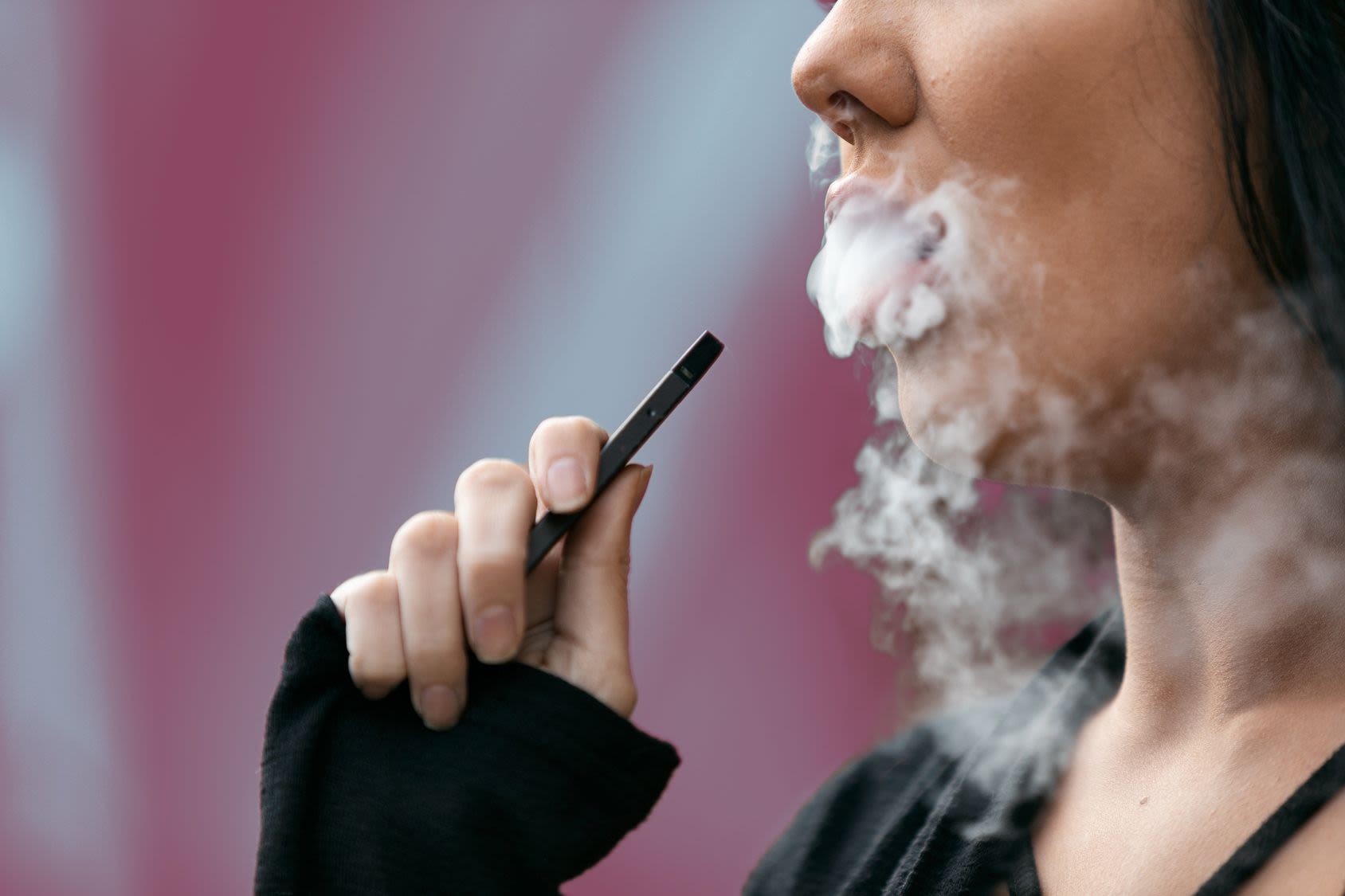
Video: TikTok @saffiremarguerite
Video: TikTok @saffiremarguerite
“One thing about me is that I am anti-vape. If you’re holding a vape in a photo? Immediately trashy. You’re my friend vaping? You bet, I’m scolding you like an overbearing parent. I literally cannot associate with anyone who thinks it’s safe, let alone cool. Vaping is a deal breaker. I am anti-vape.”
In May, I shared a TikTok video that went viral overnight and was seen by over a million people.
I announced to the world my strong stance against vaping, describing myself as ‘‘anti-vape’. The comment section reflected the controversial nature of vaping and highlighted some of the reasons why people choose to vape.
In this story, I spoke with three young adults about their vaping habits and their personal reasons or attraction to vaping.
Chloe* (18) describes herself as a social vaper.
Max* (23) has been vaping before it was a trend.
Miranda* (29) has been vaping as a means to quit smoking.
Each of these young adults started vaping for different reasons, but now they all share the same regret - they wish they never started, and this story will explain why.
(Note* Names changed to protect privacy)
What is vaping?
E-cigarettes, more commonly known as vapes, are battery-operated devices.
Sucking on the device will cause the liquid heated by the battery to be inhaled into the lungs. It’s the same sensation as sucking air through a straw.
Exhaling will produce a vapour which dissipates relatively quickly. This mimmicks the act of smoking.
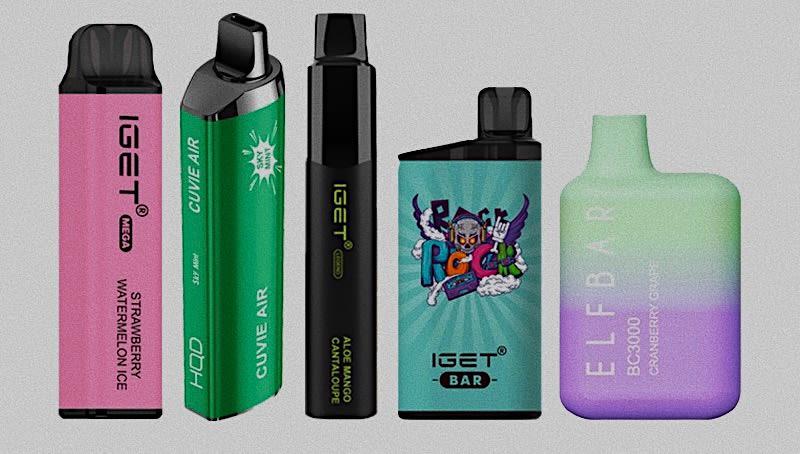
Image: iGet Vape Website
Image: iGet Vape Website
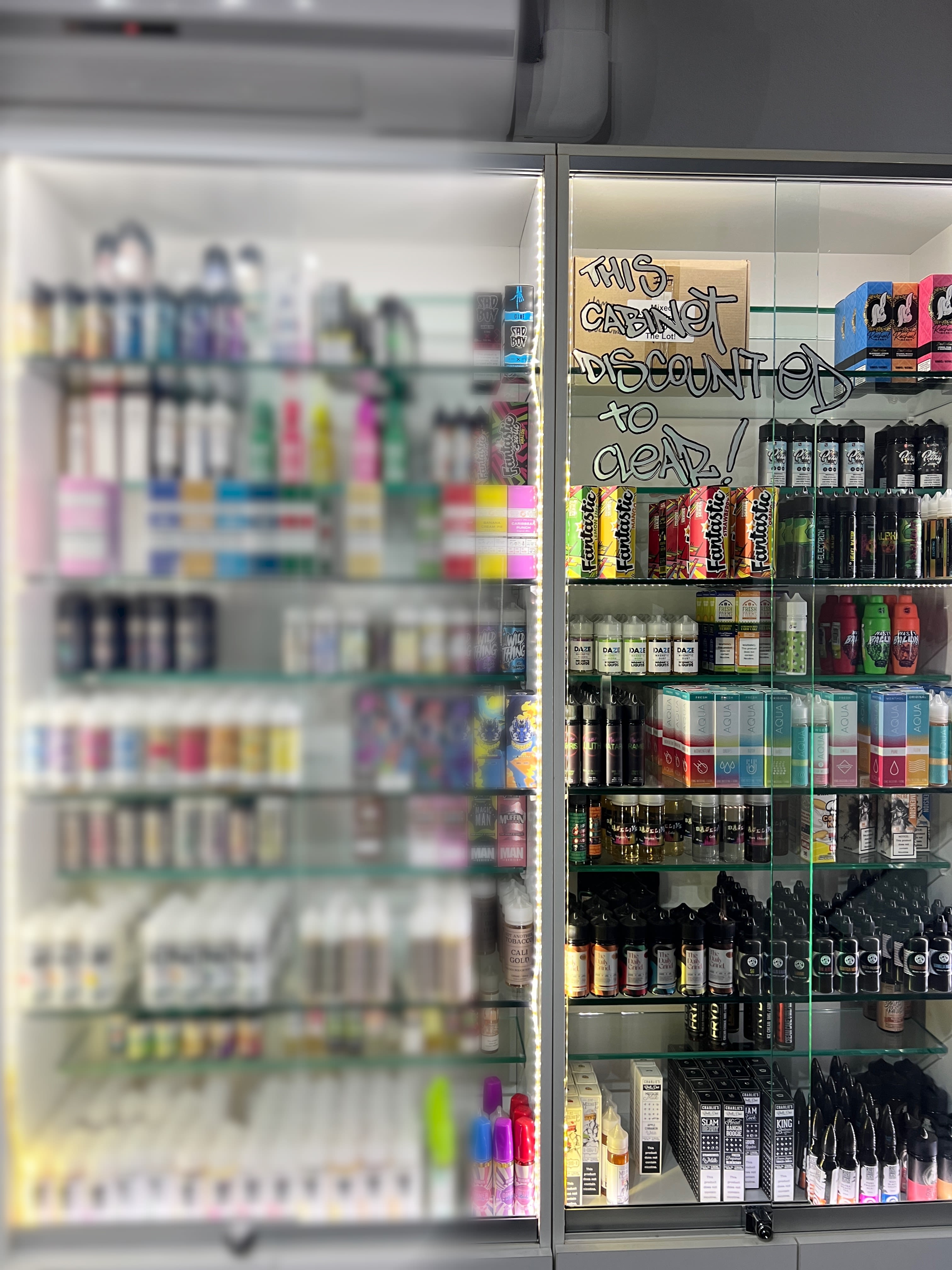
Why is it dangerous?
Toxic chemicals and metals have been found in both flavoured and nicotine vapes, according to The American Lung Foundation.
These include:
- Propylene glycol - a common additive in food; also used to make things like antifreeze and paint solvent
- Carcinogens - a range of chemicals known to cause cancer including acetaldehyde and formaldehyde
- Acrolein - a herbicide primarily used to kill weeds
- Diacetyl - a chemical that causes lung diseases, bronchiolitis obliterans ('popcorn lung')
- Diethylene glycol - a toxic chemical used in antifreeze
- Heavy metals - including nickel, tin and lead
- Cadmium - a toxic metal found in traditional cigarettes
- Benzene - a compound in car exhaustsWhy is Vaping
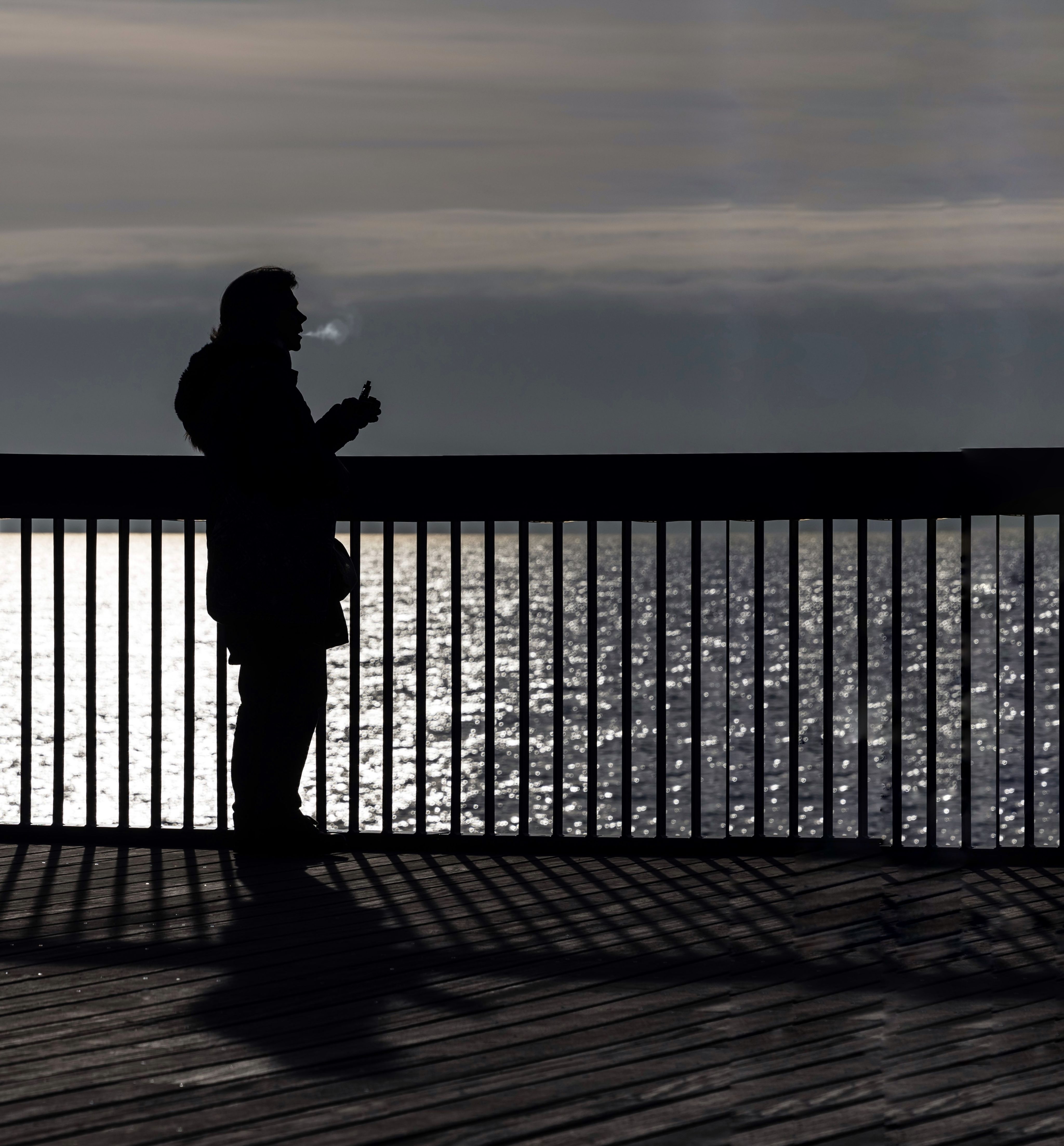
Who is vaping?
For those aged 14 to 17 years, there were more current vapers (14.5%) than current smokers (12.8%) in early 2023, according to the Australian Government's Department of Health and Aged Care.
It is more likely for teenagers and young adults who vape to have never smoked a traditional cigarette before, according to a recent study by the Cancer Council Victoria.
Vaping is highest among young adults aged 18 to 24 numerous studies have found including the National Drug Strategy Household Survey and Cancer Council Victoria.
One in five (20%) young adults who had never smoked a traditional cigarette had tried vaping, according to the Alcohol and Drug Foundation. This figure was reported in 2021, and had increased from 13.6% of young adults reported in 2016.
Michelle Lampis, the Alcohol and Drug Counsellor at the University of Newcastle, says more university students are asking for help with their nicotine or flavoured vape addictions.

‘I was only a social vaper’
Chloe, an 18 year-old nursing student, would have described herself as a "social vape", until more recently.
“I would only vape when I was out and having a good night with my girlfriends,” says Chloe.
“I have never bought a vape from a convenience store, but I’ve heard that is where people go,” she says. “I always transferred money to my friends who had bought the vapes from Facebook Marketplace.”
Chloe first tried vaping last year when she was 17 at a house party. She was offered the vape by her friend. She continued to "vape socially" for a year, unaware that flavoured vapes contained traces of nicotine. She believed it contained “chemicals as harmful as artificial lollies".
The University of Sydney found that nearly two-thirds (65%) of teenagers who have ever vaped believed that flavoured vapes did not contain any traces of nicotine.
Aware of the dangers now, Chloe refuses to vape again.

‘I thought it was better than smoking’
Overall, very few cases of vaping-related illnesses have been reported in Australia to date.
NSW had six young people presented to hospitals with symptoms of seizures, collapsing and vomiting, thought to be caused by vaping in the last week of June, NSW Health said.
Michelle Lampis, the Alcohol and Drug Counsellor at the University of Newcastle is experiencing more university students this year coming into her office and admitting they can’t stop vaping.
“Many young people who come to see me don’t believe they are suffering enough to have to seek help from a GP,” says Lampis.
In February this year, Max, a 21-year-old carpenter, developed a persistent dry cough and shortness of breath. He originally thought it was asthma. However, recent X-rays revealed permanent scarring in his airways, otherwise known as "popcorn lung", thought to be caused by vaping.
Diacetyl are flavouring agents which used to be used in commercial popcorn, however they are still being used in flavoured vapes, according to The Lung Foundation Australia.
Max, unafraid to speak up about his declining health, wants his story told.
Max has been vaping for the past five years and “before it was even popular.” He had no intention of quitting because he had never experienced any vape symptoms. When he developed a persistent dry cough, within days, he was diagnosed with an acute lung disease.
Although Max initially started with nicotine cigarettes, he soon soon transitioned to flavoured vapes, believing they did not contain nicotine.
“My pop smoked every day of his life, and he died before his 50th birthday. He got dementia from smoking and it destroyed my mum. I didn’t want to risk putting my family through that either,” he said.
Max liked flavoured vapes because he found “solace” and “expression” in the swirling clouds of vapour. Artists like ASAP Rocky and Post Malone were also “inspirational vapers” to him.
Max wants to quit vaping. He believes “the experience” is not worth the decline in his physical health and, more importantly, his mental health.
Like many other young adults, he experiences worsened anxiety symptoms from vaping with difficulty sleeping and frequent headaches.
Max has tried to quit vaping several times this year.
“I had no idea flavoured vapes were that bad,” says Max. “If I had known, I never would have started.”

‘I used vaping to quit cigarettes’
Miranda is a proud Aboriginal woman from Geawegal (Upper Hunter Valley) who has quit her vaping addiction and been clean for more than six months.
She began vaping two years ago in the hope of quitting smoking traditional cigarettes.
At the young age of 12, Miranda found herself drawn into a world of smoking and drinking.
When she shares her story with people in Newcastle, where she now lives, they often ask why her parents allowed her to start smoking at such a young age.
“When you want to do something badly enough, you’ll find a way to do it,” Miranda explains.
“Rebelling against your parents is easy, just like breaking curfew, talking back, driving too fast or ditching school. With smoking, it was no different. I had started my first job at that age…when I started making money, I’d selfishly buy packets on my lunch break and smoke it there.”
Aboriginal and Torres Strait Islander people are three times more likely to be current smokers compared to non-Indigenous Australians, according to the Australian Government Institute of Health and Welfare.
Aboriginal and Torres Strait Islanders smokers nominate ‘stress relief’ to be the most common reason why they smoke, according to the Cancer Council Victoria which developed the ‘Tobacco in Australia Factsheet.’
However, vaping intensifies anxiety, depression and stress according to a recent report by the Australian Institute of Family Studies (AIFS).
“We know that having depressive symptoms makes you more likely to use e-cigarettes and vice-versa. However, we can’t say that every teenager who uses e-cigarettes will experience worsened mental health,” says Dr Many Truong, a public health researcher at the AIFS.
Miranda, seeking guidance, contacted her local GP, who prescribed nicotine patches.
“If I had known that nicotine patches were more effective than flavoured vapes, I never would have vaped. I wouldn’t recommend vaping to stop smoking cigarettes to anyone because it is just as addictive in its own way.”
Miranda’s future is looking brighter as she remains smoke-free and just last month she joyfully announced the arrival of a new family member, expected in March 2024.

What is the attraction?
There are five main factors that have contributed to young adults being attracted to vaping, according to Margurite Hook, a Lecturer in Marketing at the University of Newcastle Business School who teaches International Marketing.
- Appeal
- Accessibility
- Affordability
- Social Media
- Celebrity Culture
Hook explains that vaping companies have not rebranded the image of smoking but have instead rebranded the product to be more appealing to young people.
“Vaping has similarities to smoking from the visible smoke exhaled from users. It was too easy for vape companies to launch off the backs of big tobacco companies who have already created this image of smoking to be sophisticated and glamorous at times, and at other times, edgy with sex appeal,” says Hook.
Unlike traditional cigarettes, vape products are colourful and come in flavours such as mango and bubblegum. There is no unpleasant smell of smoke produced and there is no need for a lighter.
All you need to do is, "suck and blow," explains Hook.
In 2015, Instagram banned e-cigarettes from being advertised on its platform. JUUL, a leading vape brand, released a statement to their users complying with Instagram’s decision.

Image: Instagram @juulvapor
Image: Instagram @juulvapor
However, Instagram’s policy is only loosely enforced. The glamorisation of vapes can be found across the platform.
“Peer pressure is very nuanced," says Lampis. "Once a product becomes popularised, people want to conform, or discover ‘the hype,’ especially in young adults as they are learning their identity and are more easily influenced by people, celebrities and social media.”
Nearly two-thirds (63%) of young people have reported their last vape was from a friend, according to the Australian Alcohol and Drug Foundation.

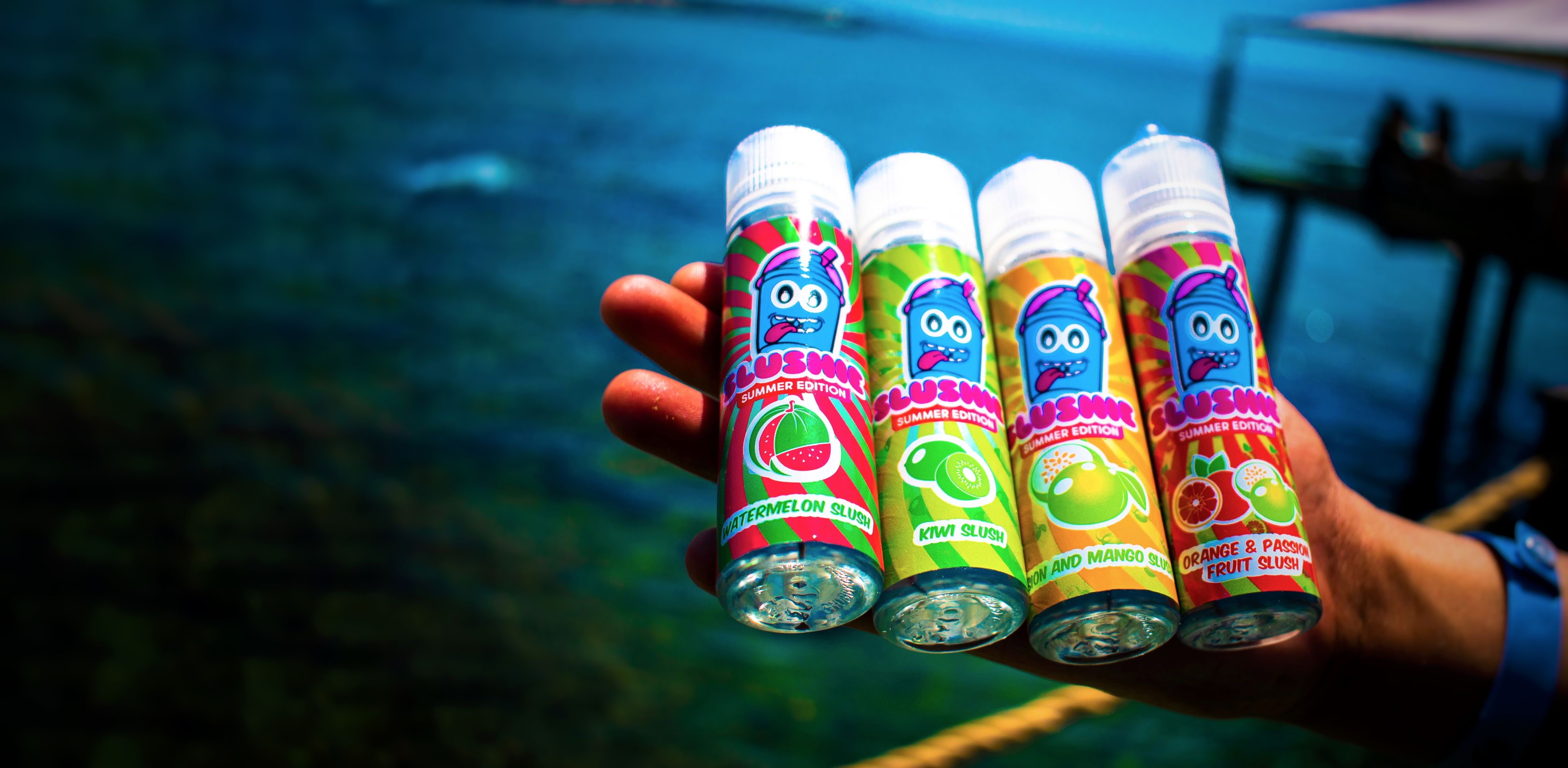
Don't people know it's dangerous?
Currently, there is not a single nicotine vaping product that has been approved and registered by Australia’s drug regulator, the Therapeutic Goods Administration (TGA), meaning vape products have not been tested for quality or safety.
Mark Butler, the Australian Minister for Health and Aged Care, notes that vaping products “need to be free of chemicals that the TGA lists as particularly dangerous. They need to be at particular nicotine levels…” in order to be approved.
“No tobacco company has applied for TGA approval because it’s an unregulated industry,” says Mr Butler. “No two vape products will be the same.”
More than half (55%) of young adults are unaware that flavoured vapes contian traces of nicotine, according to the Australian and New Zealand Journal of Public Health ‘Generational Vape’ Study.
Nicotine is just one of many concerns amongst a range of chemicals and toxic metals.
“When a student tells me they know vaping is bad, they usually can’t tell me why,” says Lampis. “Young people don’t know the extent of damage being done.”
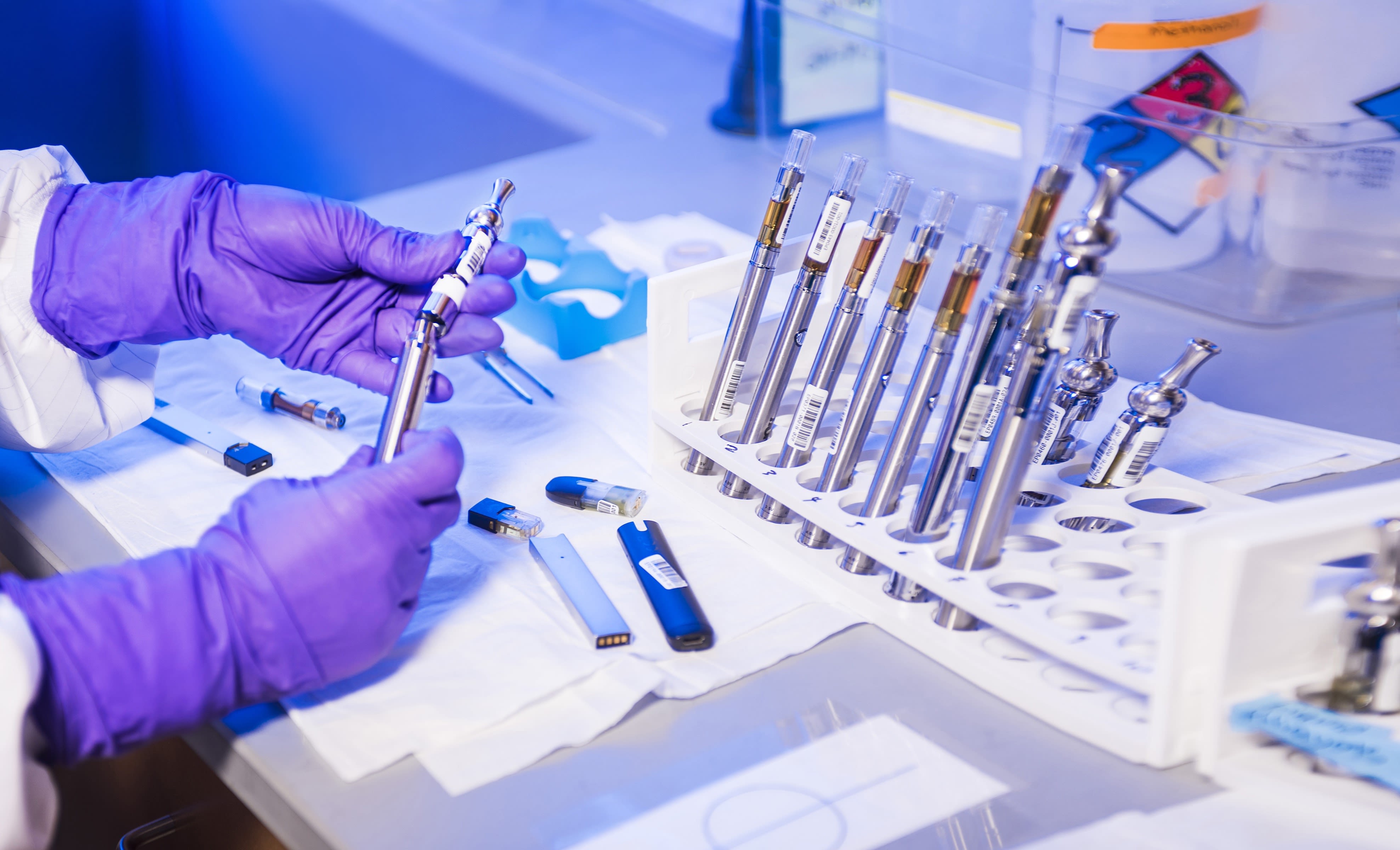
What do parents think?
Sydney parent Lillian* shares her story about her son in hopes of reminding other parents they are not to blame for their children falling victim to the addictive nature of vaping.
Both of Lillian’s children are high achievers academically. Her son in particular, was a Year 12 Honour Roll Recipient in the graduating class of 2021. He is currently in his second year of a Bachelor of Medical Radiation Science (Honours).
Lillian was shocked when she discovered through social media that her now 20-year-old son had been addicted to vaping since his late high school years.
“As a parent, I had failed to protect my son. I had never had a conversation with him once about the harms of vaping. I was always so worried about drugs, cigarettes and alcohol and vapes didn’t cross my mind. When it was becoming popular, I really didn’t know.”
In the months to follow, Lillian discovered a range of iGET Bars hidden in the top shelf of his wardrobe. iGet Bars are a 3500+ puff disposable pod device that is relatively popular among young adults today. Lillian had tried to foster open conversations with her son about his vaping habits but he became defensive.
“He’s never once acknowledged having an issue with vaping. We’ve steered clear of the word ‘addiction’ because it would have been overwhelming to him.”
While Lillian no longer finds vape pens in her son’s room, she’s not naive and understands that the addiction hasn’t disappeared.
“I know he still vapes but I have reached breaking point. Asking him to quit was straining our relationship every day. We would always end up in heated arguments, with me in tears and him packing to stay at his girlfriend’s for weeks on end,” Lillian says.
“I understand he’s a young adult and I have to respect his autonomy over his own body. But he’s also my son. I want him to make the right choices for his health.”
Her son continues to thrive academically and athletically. In fact, he was recently honoured with the captaincy of his local 2023 cricket team. However, the long-term consequences of vaping loom over the horizon.
Lillian believes that her story serves as a reminder to parents that anyone’s child can become entangled in the unregulated vaping industry.

Venues ban vapes
Brett Arrowsmith is the director of CVEM Security Group Pty Ltd and is responsible for security operations at Sydney’s Qudos Bank Arena (Qudos).
ASM Global, an international venue that oversees 400 globally recognised venues, like Qudos, made the executive decision to ban vapes.
"The venue cannot risk facing numerous lawsuits in the future because we allowed vapes inside," says Arrowsmith. “Vapes haven’t been approved by the TGA.”
“Detecting vapes at entrance points through methods such as hand wanding, walk-through metal detectors and secondary searches is crucial,” explains Arrowsmith. “Failing to do so will make it more challenging to identify these individuals in large crowds as the smoke dissipates quickly.”
Arrowsmith informs his security guards that when an event is anticipated to attract a younger audience, they should be prepared to discover more vaping devices during bag searches.

What is the government doing?
The Australian Federal Government has announced new reforms that will change the vaping landscape, and will help businesses such as Qudos.
Nicotine vaping products require a prescription from a health practitioner in all states except Tasmania. However, there is a thriving black market, with convenience stores selling flavoured vaping products advertised as ‘nicotine free’ to minors.
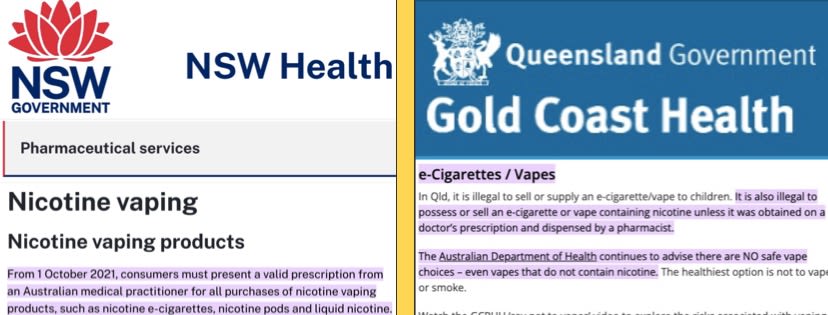
The Federal Government has recognised this loophole and seeks to work with states and territories to lead to banning the sale of all vape products without a prescription. The Australian Government has announced the Federal Budget for this year will allocate $737 million to fund a number of measures to protect Australians against the harm caused by tobacco and vaping products.
Health Minister, Mark Butler, believes Australia needs to reclaim our status in the fight against tobacco addiction.
“Australia has been a leader in public health measures to discourage smoking, but after a decade of inaction, the gains of Labor’s world-leading plain packaging laws have been squandered,” says Butler.
The current leading reform being pushed by the government is that all vaping products can only be purchased, with a valid prescription, at an Australian pharmacy. This means vendors such as tobacconists, convenience stores and petrol stations will be banned from stocking or selling both flavoured vapes or nicotine vapes to anyone, including minors.
The Government will also prohibit colourful packaging and appealing flavours, which in theory, will only be relevant to those buying prescription vapes. The packaging will need be changed to pharmaceutical-like packaging.
There will also be restrictions on the nicotine concentrations within vaping products and all single use disposable vapes which are highly appealing to young adults will be banned.
“The government is determined to support Australians tackling nicotine dependency and this next generation reform will cease any form of enticement,” says Butler.
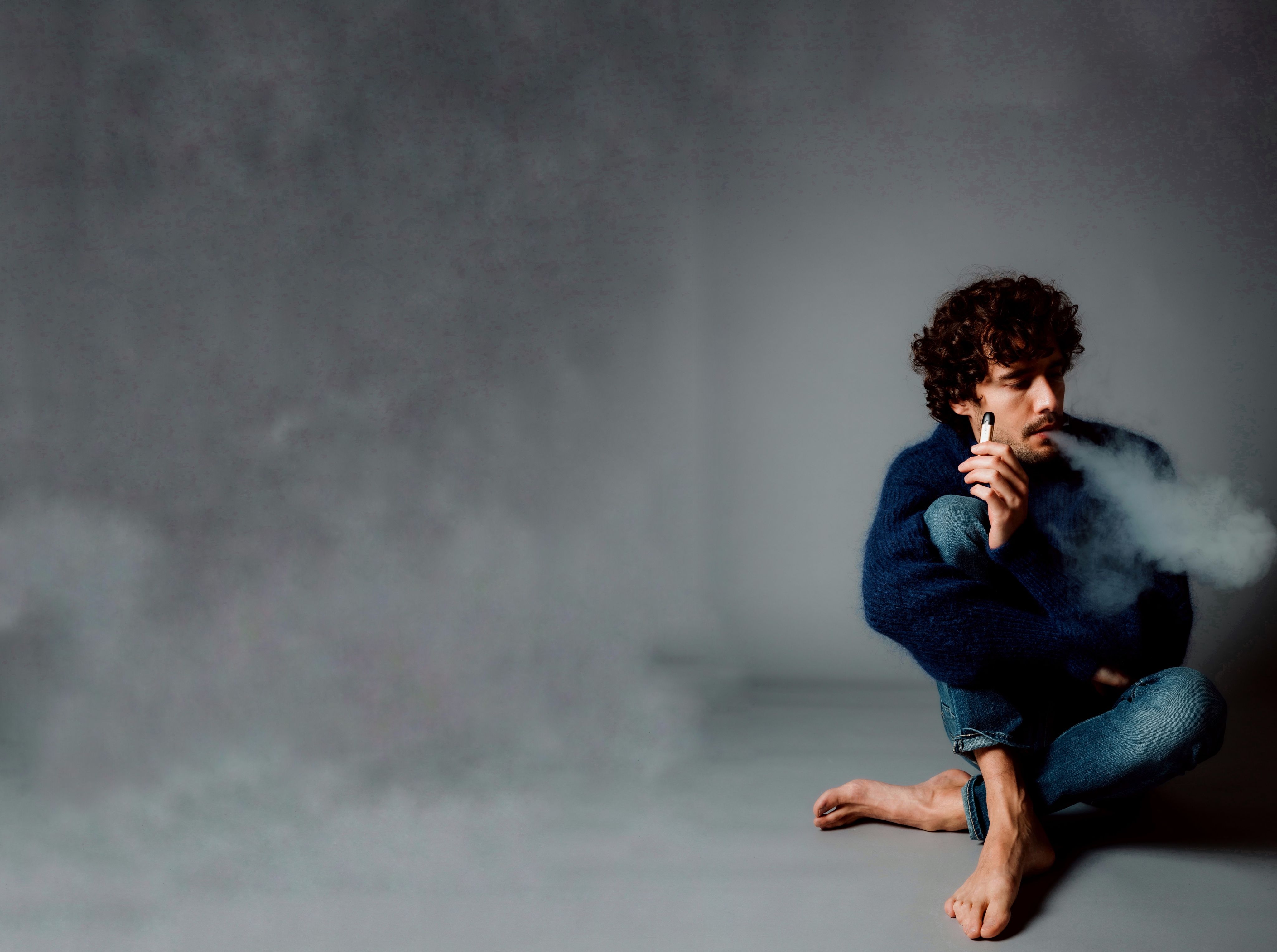
What are schools doing?
A trial program is underway that could be more widely rolled out.
The Matilda Centre for Research in Mental Heath and Substance Use (The Matilda Centre based in Sydney) has launched a school-based prevention program called the ‘Our Futures Program.’ It’s an online cartoon storyboards program for Years 7 and 8 students.
Dr Amy-Leigh Rowe is a postdoctoral researcher at the Matilda Centre, working in prevention and heavily involved in the 'Our Futures Program'.
“The Our Futures Storyboard is highly effective because we have spent so much time developing cartoon characters that are relatable to young people,” says Rowe. “We want to ensure that students can see themselves in the lives of these characters, and there is lots of drama so they can be entertained and live vicariously through these characters.”
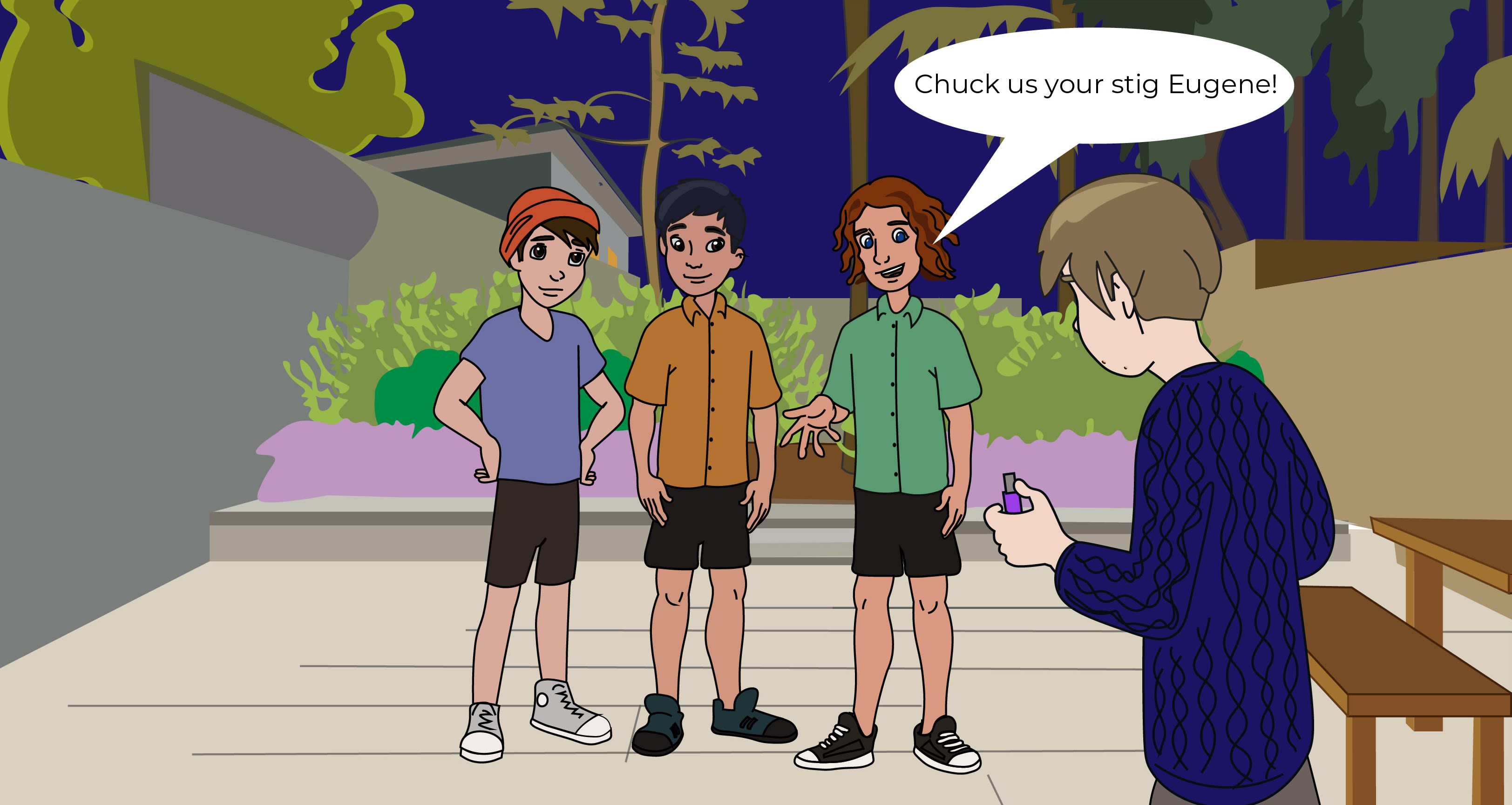
Image: A Storyboard from the Our Futures Program by The Matilda Centre
Image: A Storyboard from the Our Futures Program by The Matilda Centre
The online cartoon storyboard is an individual activity that is completed at the student’s pace, estimated to take about 20 minutes. Afterwards, the class consolidates their knowledge and tests out practical skills.
“The class discussion is always peer led, which has proven to be more effective than listening to an authoritative figure such as a teacher, police officer or parent,” says Dr Rowe.
The Our Futures Program study was launched in April of this year. Currently, there is 5,000 students from 40 schools across NSW, Queensland and Western Australia enrolled in the study. Half of these students will be exposed to the Our Futures Vaping program, and the other half will continue with their PDHPE health education.
A test will be conducted to assess whether the program has positively impacted the students learning at the six-month, one-year, two-year and three-year mark.
Currently, the study is approaching the six month mark.
“We don’t know what our findings will be yet, but we are really hopeful that it will be effective,” says Dr Rowe.
Professor Maree Teesson, the Director of the Matilda Centre says there is strong potential for the Our Futures Program to become part of NSW Stage 4 (Years 7–8) NSW Education Standards Syllabus as soon as 2025, providing it delivers effective results.

Where are we headed?
University of Newcastle counsellor Michelle Lampis is finding that more young adults are coming forward to seek help for both their flavoured and nicotine vaping addictions.
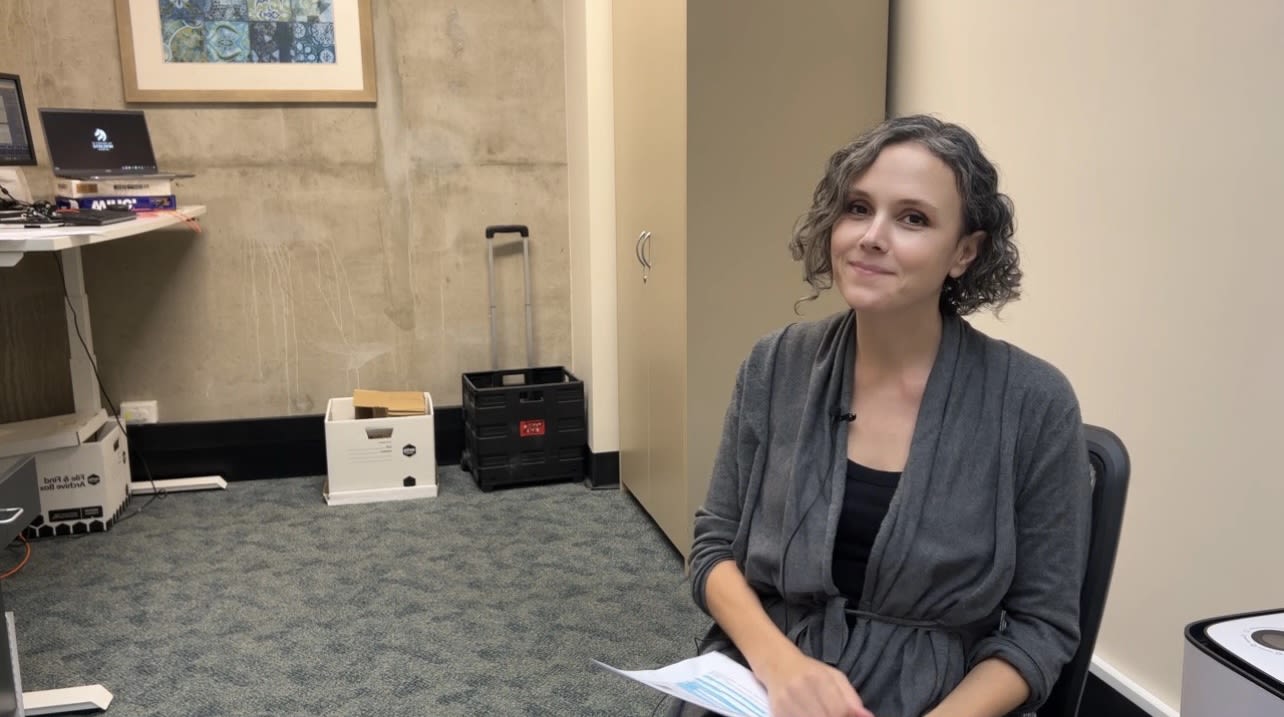
She predicts that in the next five years there will be a shift in vaping culture as the health impacts become more widely known.
“I believe we are going to be seeing more young adults recognising they have an addiction and being unafraid to seek practical health advice,” says Lampis.
General Practitioner Dr Abi Mebrate who specialises in child and adolescent health says it is rare for young people to seek his advice for their vaping addictions or habits.

“I get parents coming in saying my son or daughter can’t stop vaping, but it’s rare to come from young people themselves,” says Dr Mebrate.
Asked how would handle a situation where a young adult wants help with their vaping addiction, Dr Mebrate explains that he would like to start by telling patients they are “lucky” because the addiction to vaping is because of the nicotine present.
“I like to start by explaining to patients that nicotine isn’t the risk. If anything, nicotine is protective of neurogenetic diseases such as Parkinson’s disease. It’s the smoking that will cause you harm,” he says.
He would likely discuss with patients TGA-approved cessation tools, such as chewing gum, nicotine patches or ‘champix varenicline,’ a medication that binds to receptors in the brain to stop the craving of nicotine.
“The belief that vaping will help you smoke fewer cigarettes was a lie told to us by the Big Tobacco Companies,” says Mebrate.

So, what have I learnt?
Through my conversations with Chloe, Max and Miranda, I learnt that many young people are unaware that vape products, whether nicotine or flavoured, will contain traces of nicotine, dangerous chemicals, and toxic metals. Cultural peer pressure also plays a significant role in influencing young people’s decision to vape.
In May, I shared a TikTok video that went viral overnight and was seen by over a million people.
At the time, I had personally viewed vaping as ‘unhealthy’ but couldn’t tell you why.
Now, armed with a better understanding, I'm determined to initiate open discussions with my family, friends and peers because it is evident that a lack of education is a key reason for vaping among young people.
I also encourage you to open discussion with those around you, especially with young adults, who are the most likely age group to be vaping.
Now excuse me, I have a couple of TikTok videos to make.

Support Services
Quit Helpline (13 78 48)
- Get encouragement, resources and support to help quit vaping
- Updated information on e-cigarettes and vaping by The Matilda Centre
Headspace (1800 650 890)
- Talk to a Qualified Youth Mental Health Professional
All the images featured in this article were captured by Saffire Penn, or sourced from 'Unsplash,' a copyright-free stock photo community, unless otherwise specified.
